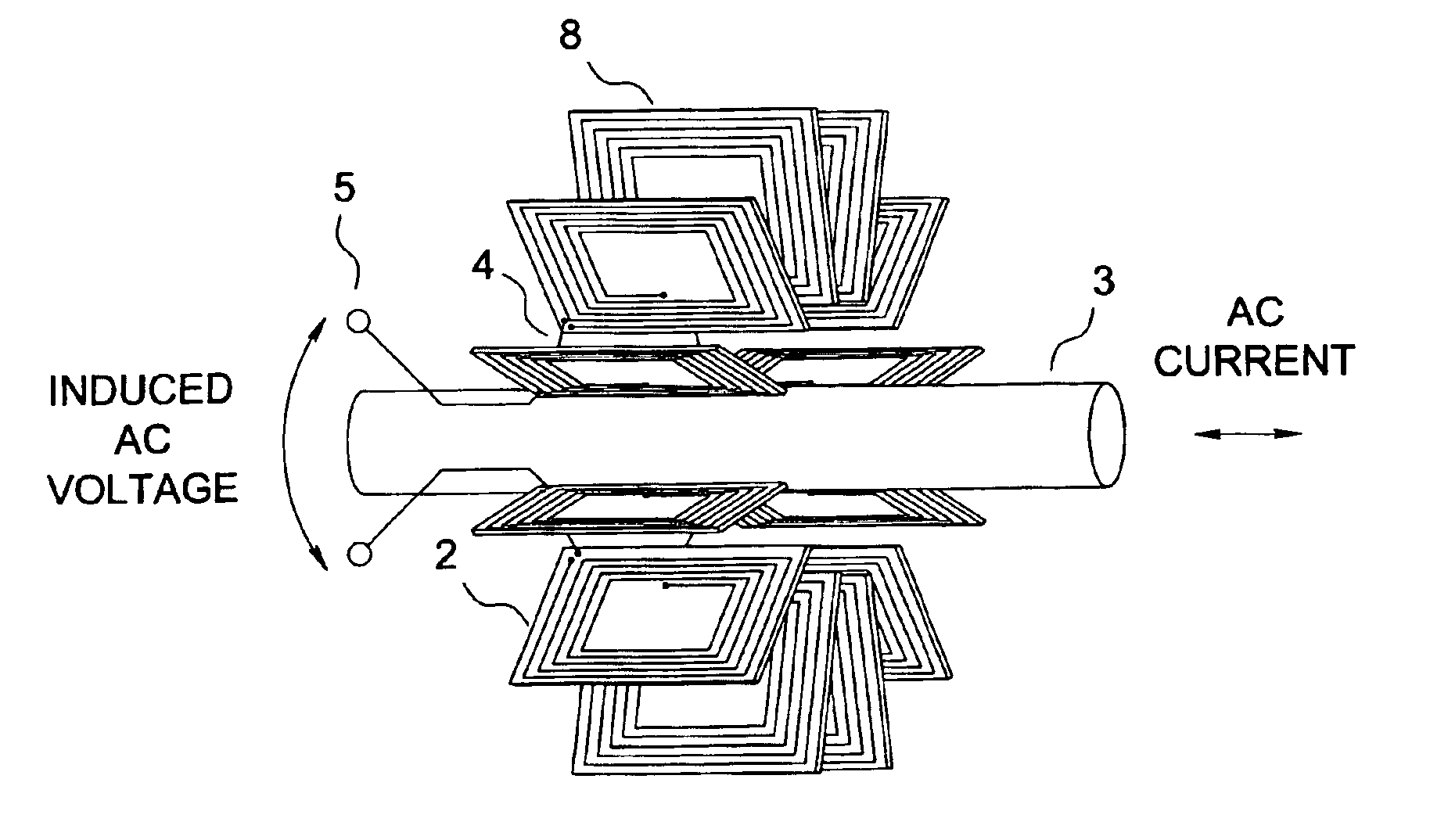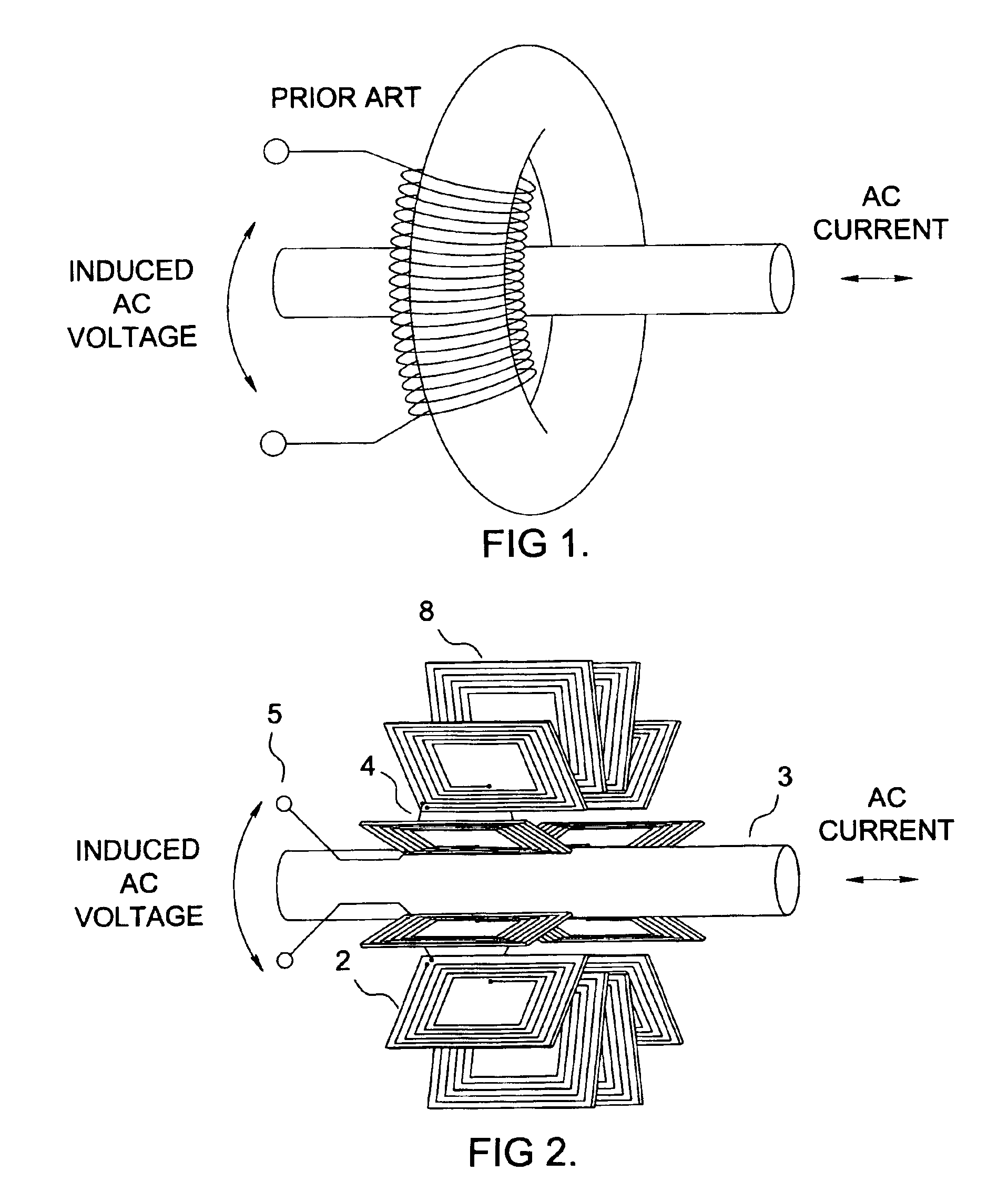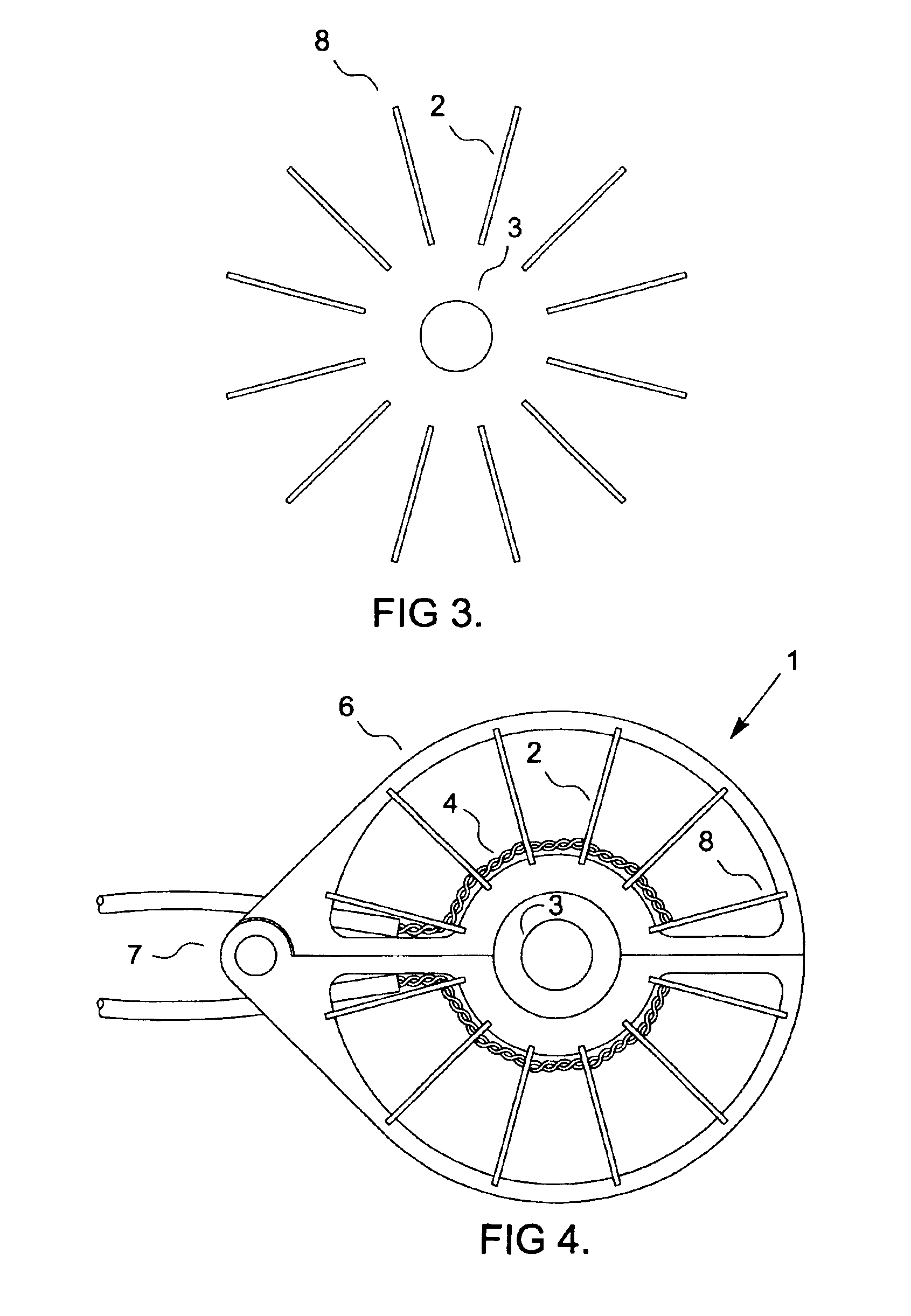Coreless current sensor
a current sensor and coreless technology, applied in the direction of instruments, measurement using dc-ac conversion, base element modification, etc., can solve the problems of large coil winding cost, affecting the overall magnetic permeability of the core, and the output signal is affected, and achieves low cost, large signal output, and easy installation.
- Summary
- Abstract
- Description
- Claims
- Application Information
AI Technical Summary
Benefits of technology
Problems solved by technology
Method used
Image
Examples
Embodiment Construction
[0030]Referring now to FIG. 2, a plurality of surface coils 2 is arranged around a central cavity for receiving an AC current carrying conductor 3. For simplicity of manufacture, each coil 2 may be printed onto a circuit board 8 or other suitable substrate. Preferably the coils 2 are substantially equally or at least uniformly spaced.
[0031]Although optimum results may be obtained with equal spacing, near optimum results can be achieved with unequal spacing as long as the spacing is uniform. For example, a sensor with 18 surface coils with a spacing of 20 degrees between adjacent coils would be equally and uniformly spaced, but if the spacing alternated between 10 degrees and 30 degrees, e.g. 10,30,10,30 . . . the coils would not be equally spaced, but would still be uniformly spaced. To better understand why, one could imagine two sets of equally spaced coils being interleaved. Each set would possess the benefits of a toroidal geometry, and therefore would possess the same in combin...
PUM
 Login to View More
Login to View More Abstract
Description
Claims
Application Information
 Login to View More
Login to View More - R&D
- Intellectual Property
- Life Sciences
- Materials
- Tech Scout
- Unparalleled Data Quality
- Higher Quality Content
- 60% Fewer Hallucinations
Browse by: Latest US Patents, China's latest patents, Technical Efficacy Thesaurus, Application Domain, Technology Topic, Popular Technical Reports.
© 2025 PatSnap. All rights reserved.Legal|Privacy policy|Modern Slavery Act Transparency Statement|Sitemap|About US| Contact US: help@patsnap.com



